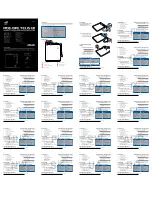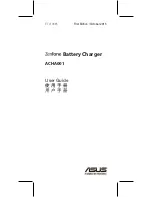
6. Operation
6.1. Start up
The solar charger will power up as soon as it has been connected to a battery and/or to a solar panel. As soon as the solar
charger has been powered up, it can communicate via the VE.Direct port and Bluetooth. The the solar charger's data can be read
out and setting configurations can be made using the VictronConnect or the optional display.
The solar charger will commence battery charging as soon as the PV voltage is 5V higher than the battery voltage. For charging
to continue, the PV voltage must remain at least 1V higher than the battery voltage.
6.2. Battery charging
The charge controller will start a new charge cycle every morning, when the sun starts shining and when the PV voltage is 5V
higher than the battery voltage.
Default method to determine length and end of absorption for Lead-acid batteries
The charging algorithm behaviour of solar chargers differ from AC connected battery chargers. Please read this section of the
manual carefully to understand the solar charging behaviour, and always follow the recommendations of your battery
manufacturer.
The voltage values mentioned in this chapter are for 12V systems, for 24V systems multiply by 2 and for 48V
systems multiply by 4.
By default, the absorption time is determined on idle battery voltage at the start of each day based on the following table:
Battery voltage at start up
Multiplier
Maximum absorption time
< 11.9V
x 1
6h
11.9V - 12.2V
x 0.66
4h
12.2V - 12.6V
x 0.33
2h
> 12.6V
x 0.16
1h
The default absorption voltage is 14.4V and the default float voltage is 13.8V.
The absorption time counter starts once switched from bulk to absorption.
The MPPT solar chargers will also end absorption and switch to float when the battery current drops below a low current
threshold limit, the "tail current". The default tail current value is 2A.
The default settings (voltages, absorption time multiplier and tail current) can be modified with the VictronConnect App.
There are two exceptions to normal operation:
• When used in an ESS system; the solar charger algorithm is disabled; and instead it follows the curve as mandated by the
inverter/charger.
• For CAN-bus Lithium batteries, like BYD, the battery tells the system, including the solar charger, what charge voltage to use.
This Charge Voltage Limit (CVL) is for some batteries even dynamic; changes over time; based on for example maximum cell
voltage in the pack and other parameters.
Variations to the expected charging behaviour
• Pausing of the absorption time counter:
The absorption time counter starts when the configured absorption voltage is reached and pauses when the output voltage is
below the configured absorption voltage. An example of when this voltage drop could occur is when PV power (due to clouds,
trees, buildings) is insufficient to charge the battery and to power the loads.
• Restarting the charge process:
The charging algorithm will reset if charging has stopped for an hour. This may occur when the PV voltage drops below the
battery voltage due to bad weather, shade or similar.
• Battery being charged or discharged before solar charging begins:
The automatic absorption time is based on the start-up battery voltage (see table). This absorption time estimation can be
incorrect if there is an additional charge source (eg alternator) or load on the batteries. This is an inherent issue in the default
algorithm. However, in most cases it is still better than a fixed absorption time regardless of other charge sources or battery
state. It is possible to override the default absorption time algorithm by setting a fixed absorption time when programming the
solar charge controller. Be aware this can result in overcharging your batteries. Please see your battery manufacturer for
recommended settings.
MPPT solar charger manual
Page 33
Operation
















































